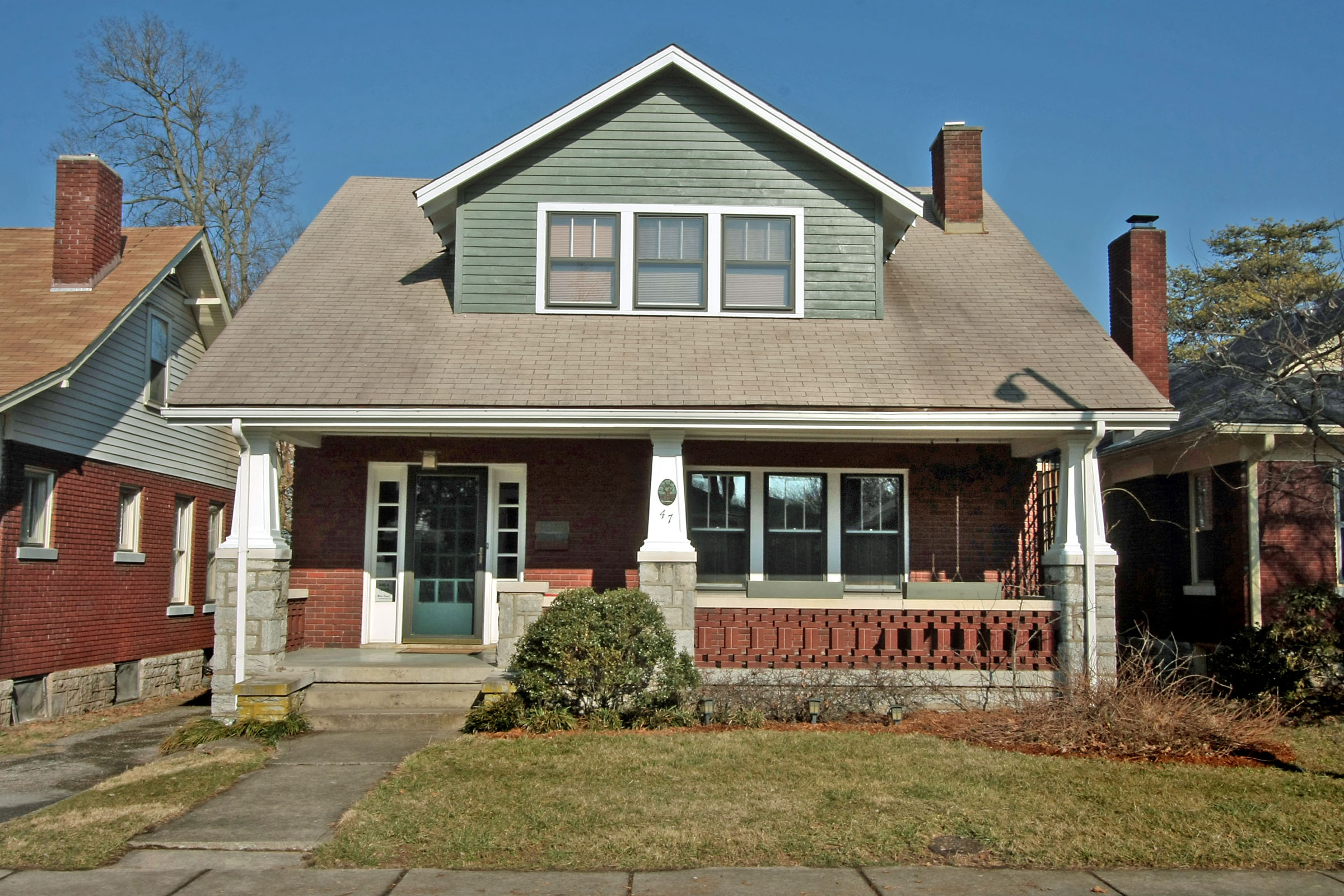
The Kenwick neighborhood is bordered by Sherman Avenue, East Main Street, and Richmond Avenue. Kenwick includes a variety of architecural styles. The Bungalow is the primary property type; however, Colonial Revivals, Craftsmen, Tudor Revivals, and American Four Squares (including some Sears Four Squares) can also be found. Most homes were built after 1920, but there are still some homes remaining from the mid-nineteenth century.
Originally, Kenwick was a part of rural Fayette County and was included in the Ashland Estate. Around 1837, the Clays sold the area that is now known as Kenwick and it became part of the Ellerslie Estate for nearly a century. In 1819, the estate was purchased by Robert “Old Duke” Wickliffe. Old Duke and his second wife Mary Owen Polly Todd Russell were an unlikely pair. Old Duke was Kentucky’s largest slave owner, and his wife, Mrs. Polly was pro-emancipation. Under Polly’s influence, Milly Crawford and her son Alfred (two slaves freed by Old Duke) colonized Liberia, the West African country settled in part by former American slaves.
Polly’s friend, Charlotte Mentelle and her husband Waldemere, lived in the house at 116 Lincoln Avenue and is reported to be the house where Madame Metelle’s School for Girls operated; however, some historians disagree. In any event, Madame Metelle’s School for Girls educated a young Mary Todd (later married to Abraham Lincoln) in social skills, dancing, academics, and conversational French. This property is now listed with the Bluegrass Trust.
After Old Duke’s death, the property was passed down to his daughter Margaret after a lengthy battle with Polly’s siblings for control of the estate. After the Civil War, Margaret and her husband, William Preston, fled to self-exile in Canada. However, in 1867, the Prestons returned with their wealth and power intact. In 1860 Charlotte Mentelle passed away and her home reverted back to the Wickliffe estate. General Preston, at that time, decided to house a former slave and his family in the property. In January 1971, members of the KKK murdered Thompson, though the local KKK chapter condemned he murdered and declared revenge upon any person who committed the murder in the group’s name.
In 1903 the heirs of Margaret and General Preston divided Ellerslie into residential lots and on May 11, 1909, Kenwick Neighborhood was established. Within a few decades the farmland was replaced by some of Lexington’s earliest suburbs and become homes for hundreds of middle class families.
In 1930, the Kenwick Church of the Nazarene was built on Owsley Avenue. It is now the Kenwick Community Center, owned by the city. Hours and activity schedules can be found at http://www.lexingtonky.gov/index.aspx?page=258.
Kenwick also includes several schools, churches, and a several locally owned businesses. Wilson’s Grocery Meat & Produce, located on Cramer Avenue, is the hidden gem of this neighborhood. The grocery has a butcher in the back end of the store and a lunch counter up front. For $1.99, they offer a bologna sandwich, chips, and soda. Across the street is David’s Barber Shop, and on the next block, a Hairbrains.
Click here to see homes for sale in Kenwick
Posted by Turf Town Properties on
Leave A Comment